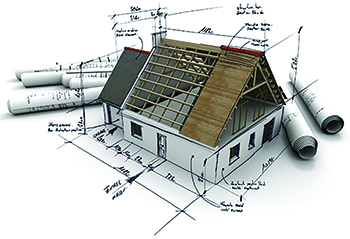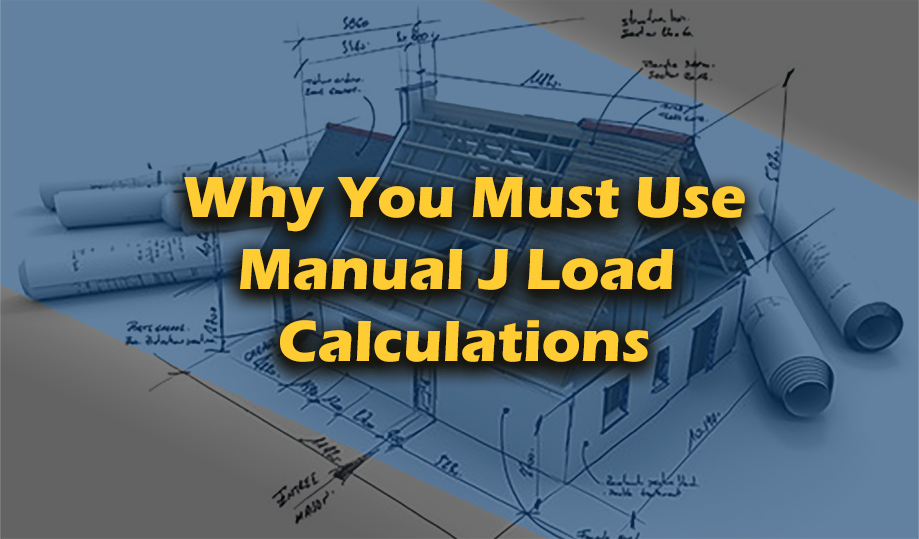Part of the problem, and I hear this a lot, is that the results of a heat load calculation don’t make sense. As my friend and colleague, David Richardson is known to say, ‘When you know the truth, you will understand the confusion.’
So, let’s look at several reasons why those heat load calculations don’t make sense.
If we fail to accurately describe the essential elements of the house that affect the load, our results won’t make sense.
Manual J is a building science-related engineering calculation that helps put value on a structure’s ability to resist the loss and gain of heat under specific climate conditions.
The information we input describes structure design elements such as window energy efficiency, insulation values, orientation of the house, etc. Calculation output tells us the rate of loss and gain of heat measured in Btuh’s (the building load).
Building Load Vs. Equipment Capacity
It is an all-too-common mistake when completing a Manual J load calculation to look at the results and say something like, ‘It looks like the house needs a three-ton unit? However, you are only looking at the building load NOT the equipment capacity. When you complete the load calculation you are not even halfway done with the design process!
If we don’t know how to select the right equipment, the performance of our installed system won’t make sense.
In the human body, the rate of energy we burn is related to our metabolism. We need a certain number of calories to keep up with the rate we burn energy, or we gain unnecessary weight, or lose it too fast (I should have such a problem). Your heating and air conditioning system works the same way.
We measure the Btuh’s of heat the house is losing or gaining (the house’s metabolic rate) and we find the right machine to remove or produce just the right amount of heat for best efficiency and comfort.
The Manual S calculation is the part where we measure the calories (Btus) of the machine we put in to match the house’s rate of energy transfer. All air conditioning equipment is listed in nominal tons, but that’s just a number on the label. The manufacturer produces what is called a ‘detailed cooling performance’ or ‘extended ratings’ chart for each combination of indoor and outdoor equipment that allows us to de-rate the nominal tonnage for our local climate conditions.

Which Is Heavier: a Ton of Load or a Ton of Equipment?
The house load is based on real Btuhs. The standard is 12,000 Btuh make one ton. It takes more than one nominal ton of cooling equipment to match the 12,000 Btuh load.
HVAC equipment is rated in a laboratory at indoor (80’F) and outdoor conditions (95’F) that don’t match our real-world definition of comfort or capacity. In the simplest of terms, one ton of output capacity adjusted for my home in Texas is 11,200 Btuh at best. A typical three- ton unit puts out 33,200 Btuh in the field. We absolutely need to know that the same unit only delivers 25,200 sensible Btuh to lower the indoor dry bulb temperature.
This makes sizing a tricky deal. You don’t want to do 500 sq. ft./ton because you will likely oversize a typical system. But you can’t order equipment with the 750 sq. ft./ton that the load calculation suggests. Both are wrong.
You must match the real Btuh load without any added fudge factors to the real adjusted equipment capacity for this process to make sense.
Now we’re talking comfort.
Oh, did I mention that if you size your equipment right for sensible cooling in July, you will most likely have humidity problems in any humid climate in the spring and fall shoulder seasons? Did you know there are two peak design days that we must address as HVAC system designers? They are:
- Peak summer sensible load
- ‘Off-peak’ or ‘shoulder season’ peak latent load.
But maybe we should save that discussion for a rainy day. Outside.
Paul Wieboldt is a principle with the Manual J Design Studio, which provides a nationwide residential HVAC system design service. They also train contractors on how to make sense out of Manual J, D, and S. Training is available at their Texas Training Center as well as via online webinars.
Check out their website: www.manualJdesign.com. Contact Paul for more information at paul@manualJdesign.com. To get started with a custom design for your project, send an email to info@manualJdesign.com or call 888-799-1326.













Bottom line, Manual J is still just guessing. It’s a sad commentary that in this age when we actually can measure the heat loss/gain of the home ; we really don’t care enough about the homeowners comfort to adopt new technology. We are only interested in selling the largest unit; to make the most income per job. Wouldn’t it be far better to have a happy customer; that would happily recommend us to their friends and neighbors? The best advertising is still word of mouth. Don’t be the last Contractor in your market to adopt 21st Century technology.